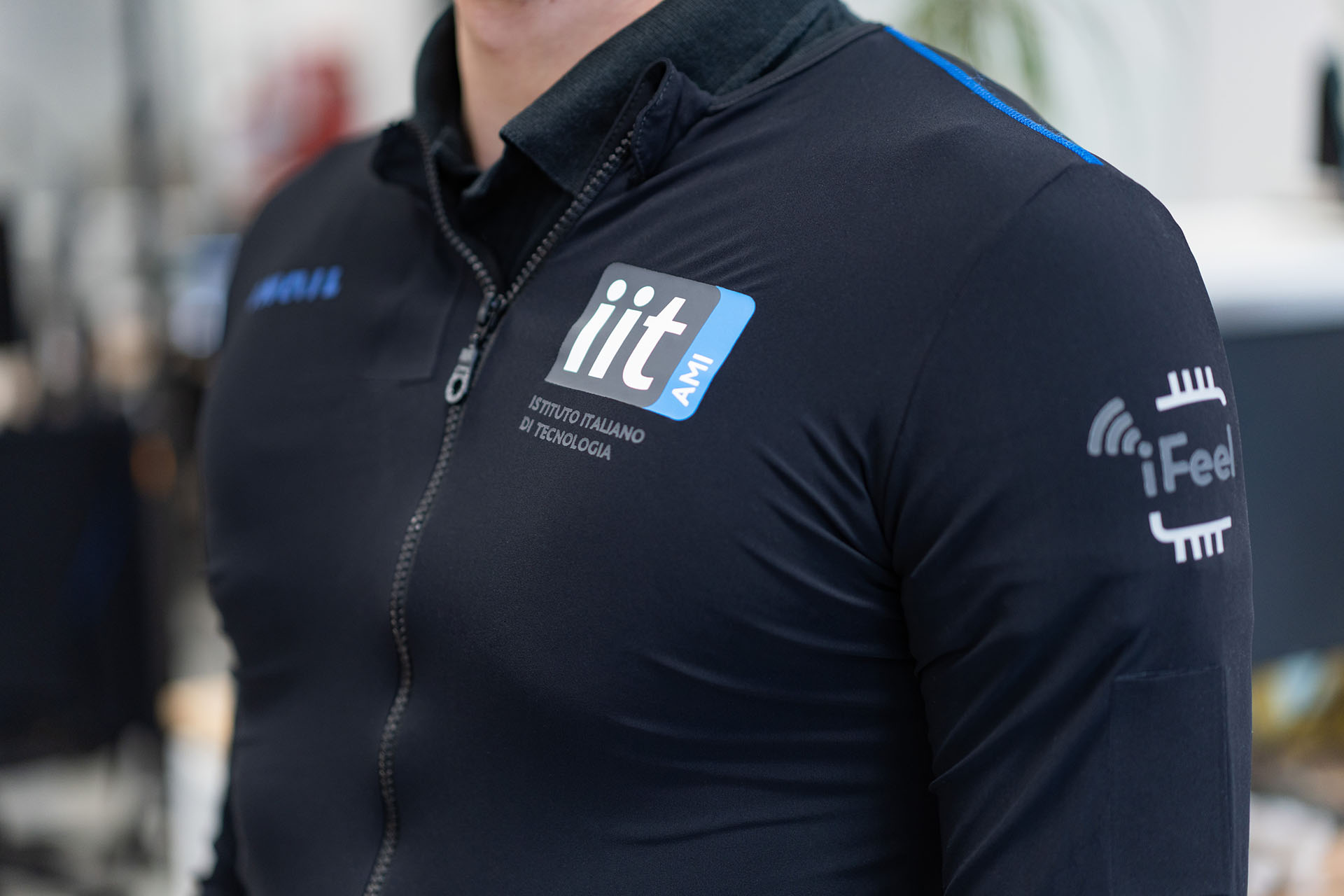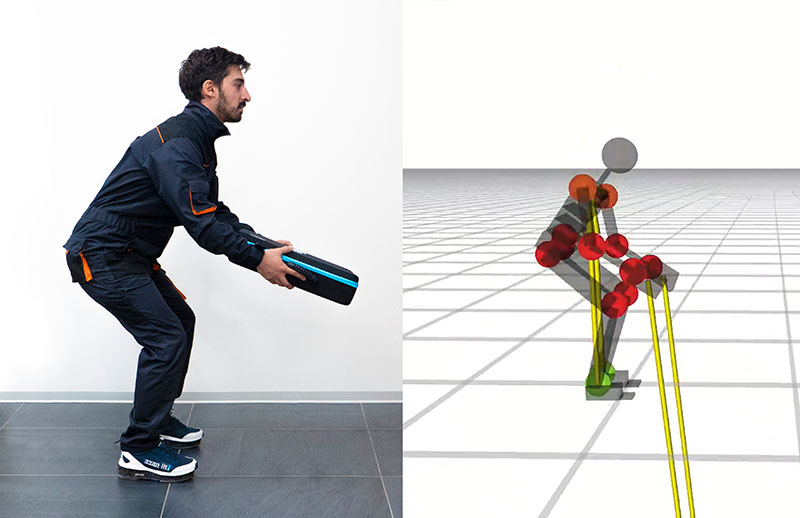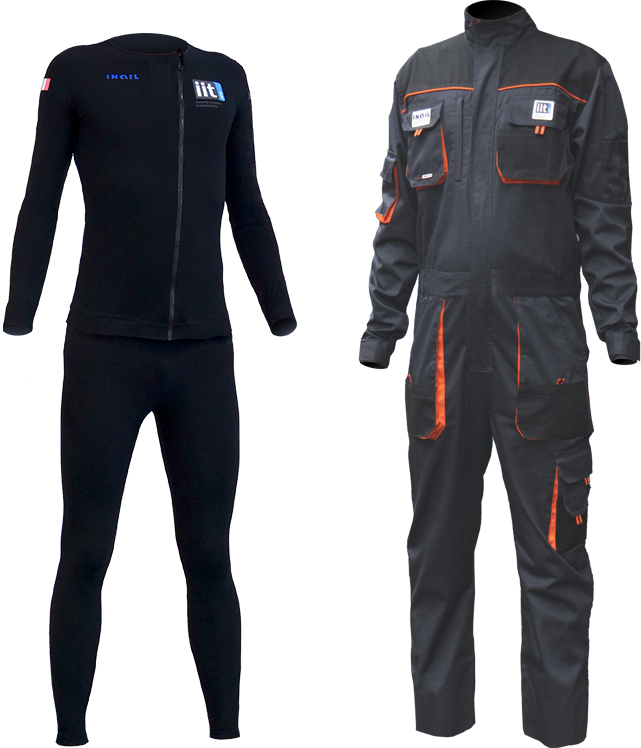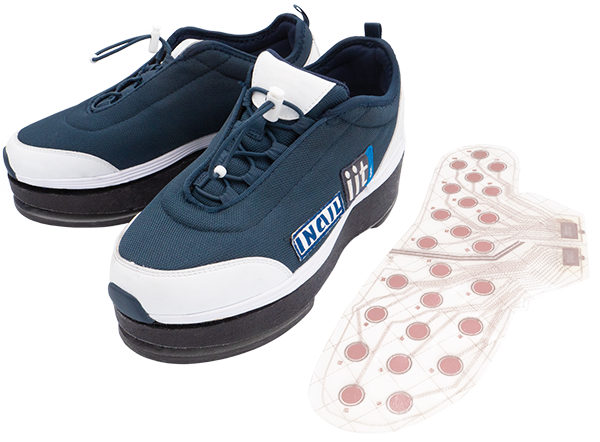

Sensorized Suits
Developed suits fall into two main categories: snug-fitting sensorized suits capable of providing accurate measurements and sensorized suits derived from the EN340 standard, optimized for the wearability of an operator in the workplace.
The suits contain inertial sensors and vibration systems capable of alerting users when biomechanical risk indices exceed predefined thresholds.
The sensors in the sensorized suits have undergone the necessary tests for CE certification.

Sensorized Shoes

The sensorized shoes can measure interactions between feet and the floor in terms of forces and torques. Each shoe contains two six-axis force/torque sensors. The shoes can also be equipped with in-development sensorized insoles to monitor the distribution of foot pressures when in contact with the ground.
The sensorized shoes have initiated the process of medical certification.
Postural analysis
In real-time, the AI assesses the posture of the human wearing the sensorized suit. Specifically, the implemented AI can evaluate the position, velocity, and acceleration of each sensorized limb of the worker.
Effort analysis
In real-time, the AI evaluates joint efforts and compression and shear forces - e.g., between L5 and S1 - based on information from the sensorized suit and shoes, knowing the subject's height and weight.
Prediction of risk with early warning
In real-time and for predefined tasks, the AI predicts future risk by alerting the user, through vibrations, when they are about to engage in a potentially high biomechanical risk task.
Learn about our other projects


